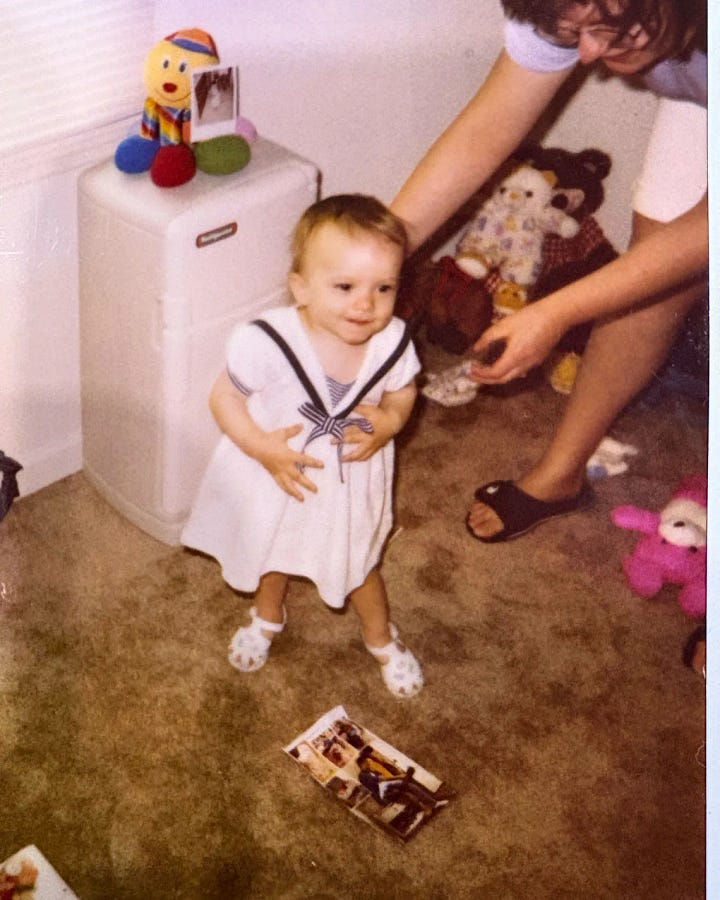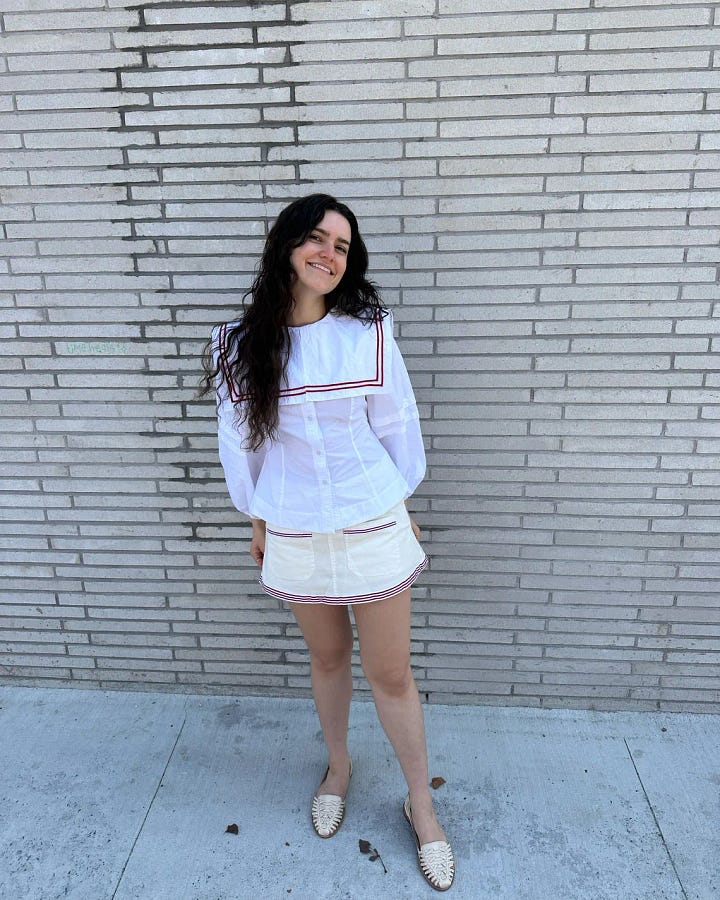I Dress, Therefore I Am (Becoming)
On autonomy, identity, and the outfits that bring us closer to ourselves.
“I’ve experimented with the full clothing spectrum — but I have yet to land on a consistent style that fully feels like me.”
But do we really need to land on a consistent style in order to feel fully like ourselves?
I was reading a piece by The Cut titled “Dressing Like a Toddler Improved My Style” by Katja Vujić — a fascinating exercise in self-exploration that invites us to return to our roots. But what caught my attention most wasn’t the toddler aspect. It was the underlying desire for consistency in style.
What do we even mean when we talk about having “a consistent style”?
Is it a color palette we stick to? A recurring vibe in everything we wear? A personal uniform?
I’ve heard people say, “I don’t have a style,” simply because they don’t fit neatly into any aesthetic box: minimalist, eclectic, western, old money, coquette — whatever label you can think of.
But are we not allowed to explore and experiment?
I know I love wearing black. But if, for a week, I feel like clashing prints and playing with color, that doesn’t mean I’ve lost my sense of self. Exploration doesn’t have to mean disconnection — it can be a way back to yourself, or simply another part of who you are.
If you feel drawn to something, that’s your intuition speaking. Listen to it.
Don’t hold yourself back just because you once decided your style was “minimalist.”
If one day you want to stack three necklaces instead of one — do it.
If you suddenly feel like wearing cowboy boots with your slip dress — go for it.
Style isn’t a prison. It’s a reflection. A conversation. An evolution.
But yes — style can become a prison, especially when we build the walls ourselves.
It’s meant to be an extension of who we are, not a limit. And we must not forget: life is ever-evolving, and so are we.
Of course, intention matters.
If you’re constantly switching styles just to keep up with trends, because you feel pressure to be "on," then yes — maybe that inconsistency reflects a disconnect from self.
But when done with curiosity and agency, experimenting with trends can be an incredible tool for self-discovery. They are tools, not destinations.
And that’s where I think a lot of people get it wrong — it’s not that experimenting takes you away from who you are. It’s that how you approach it makes all the difference.
You’re not supposed to “find yourself” in a single outfit.
The self isn’t something you stumble upon — it’s already within you, buried under noise, clutter, and expectations.
Playing dress-up is part of clearing all that away.
Which is why I find the “dress like your toddler self” idea so clever — though personally, I’d start with the version of yourself that first had autonomy over your clothes. Katja included several examples of outfit redos from when she was a literal baby — no thoughts, just vibes — and that’s where I think the point of the exercise got a bit lost. The focus is supposed to be about returning to the root of self, but can there truly be a “self” at age one, when you have no agency over what you eat, go or wear?


So, if you’re thinking of trying this exercise yourself, here’s a tip from me:
Don’t look back to when you were a baby. Look to when you were nine or ten — that version of you who finally got to have fun with your clothes. That’s the version that holds the real clues.
So no, I don’t believe we need a consistent style in order to feel like ourselves. But I do believe that why we dress the way we do matters.
Personal style isn’t about fitting into a box or sticking to a single aesthetic forever — it’s about listening to your intuition, following what draws you in, and letting that guide your self-expression.
If your current style feels inconsistent or disorienting, it doesn’t mean you’re off-track.It might simply mean you’re still in the process of becoming.
And that’s okay.
We’re allowed to evolve, to try things on — both literally and metaphorically — without always having to define who we are.
In fact, I don’t think we’re ever truly done.
Style, like identity, is an ongoing conversation.





